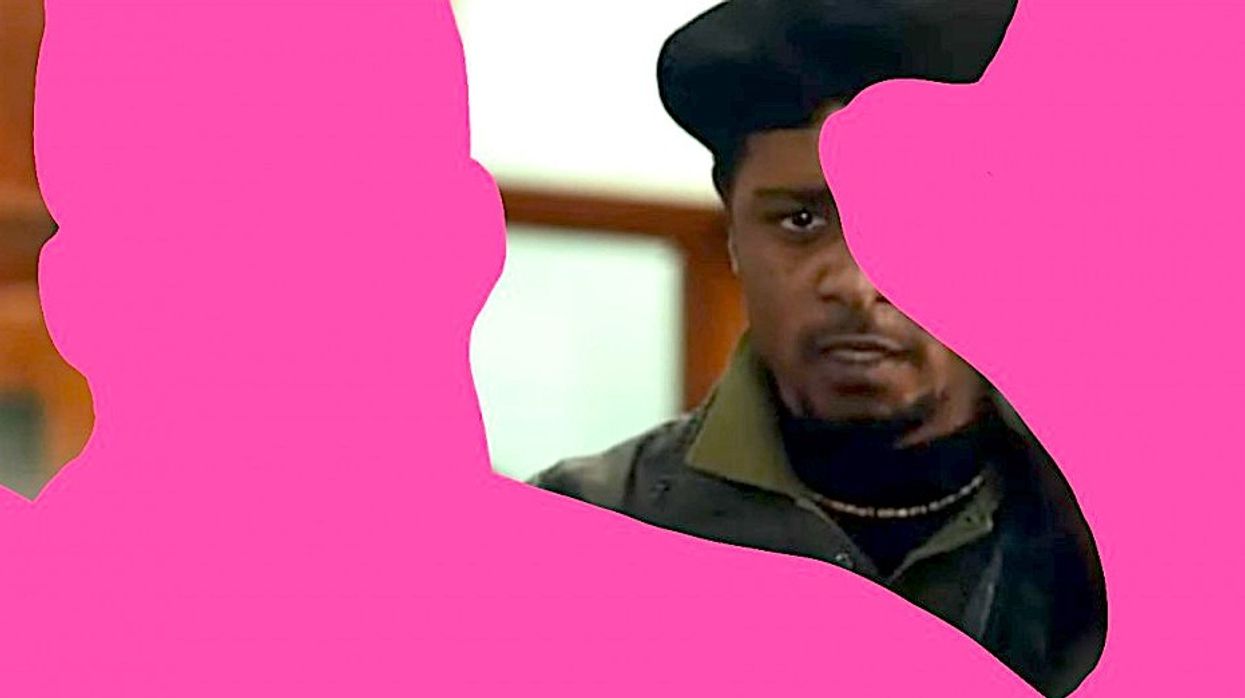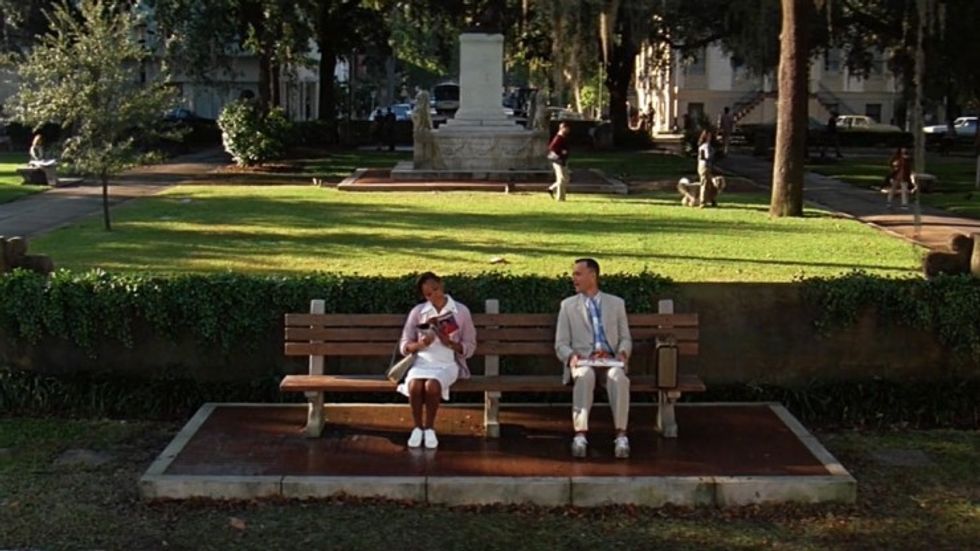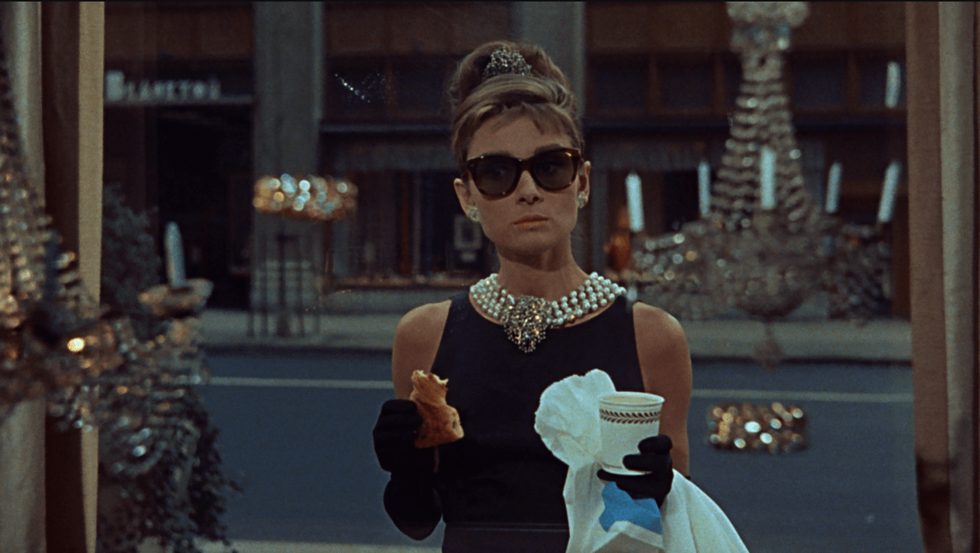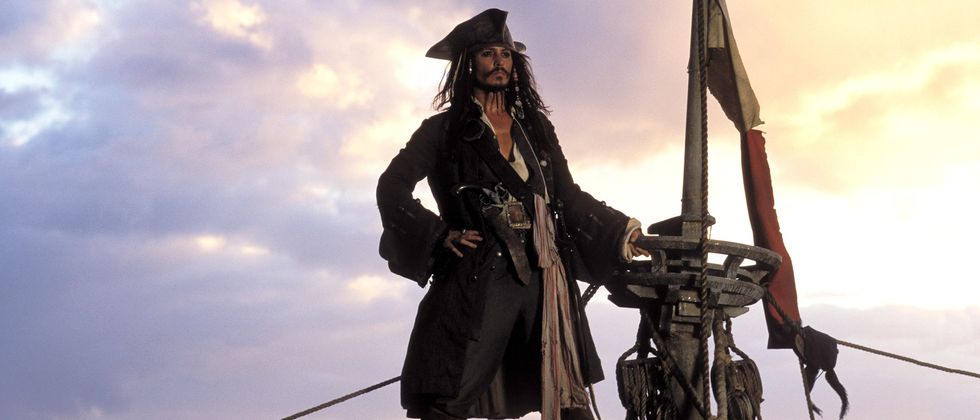How the Year's Biggest Movies Layer in Meaning with Symbolic Composition
Every shot in a movie communicates information the filmmakers want us to know.

They can communicate something directly or indirectly, but the best filmmakers are even able to communicate with us on a subconscious level. By learning the language of shot composition and framing, we can decode how filmmakers infuse symbolism into their imagery to give it deeper meaning.
In this post, we'll look at several major movies and how they use this language to tell a deeper story. Let's dive in!
SPOILER ALERTS: Minor spoilers forPalm Springs,minor spoilers forThe Queen's Gambit, major spoilers forDa 5 Bloods.
Minari (2020), dir. Lee Isaac Chung
When two or more characters are in the same frame together, the way they are arranged communicates something about their relationship.


Also note the production designer or set decorator has placed a pair of figurines, a couple, reinforcing the state of their relationship from the point of view of our protagonist, their son David (played by Alan Kim, not pictured), who sees them as a united front, a matched set.
Director Lee Isaac Chung subconsciously calls our attention to the relational dynamics of the characters, even in a scene that addresses a different element of the plot.
Palm Springs (2020), dir. Max Barbakow
Sometimes, a simple change in the angle of a shot can call attention to the symbolism of its content.

Then Nyles meets Sarah (Cristin Milioti), and they find a sense of meaning in life together.

Promising Young Woman (2020), dir. Emerald Fennell
Often, the implicit messages can be built into a shot with small but precise details in the mise en scène.


Director Emerald Fennell also has Cassie framed very symmetrically—a visual indication of stability and order—to impart her organized, methodical approach to revenge.
I’m Thinking of Ending Things (2020), dir. Charlie Kaufman
Compositional choices can also bring you into a character's reality, and a shot with extra negative space above a character's head suggests the presence of thoughts or questions in their mind.
I’m Thinking of Ending Things, like many of Charlie Kaufman’s films, plays with philosophical ideas, confusion, and existentialism.


Judas and the Black Messiah (2021), dir. Shaka King
Pay attention to the words you use to describe a moment or character metaphorically, as they could be keys to your cinematographic choices.


Words like mysterious, dodgy, unclear, unknowable, shady, shrouded, and distant might come to mind when describing O'Neal and are reinforced with the power of visual storytelling.
The Assistant (2020), dir. Kitty Green
Blocking and the visual distance between characters can tell an audience a lot about the relationship those characters have with each other.


Additionally, check out how the production designer has chosen movie posters with an eerie implication of women who are on edge or fading away.
The Father (2020), dir. Florian Zeller
We tend to rely on the basic shot setup—wide, medium, medium, close-up, reverse close-up—but creative conceptualization of a shot can make your storytelling both deeper and more efficient.


First, by framing Anne in the shot instead of leaving her out entirely, we can see clearly that Anthony is intentionally excluding her from the conversation. She's relegated to the background of the frame, further expressing Anthony's feelings about her. Positioning Anne carefully in the small gap between Anthony and his new confidant indicates how Anthony feels Anne is coming between them. And finally, because she's framed clearly behind them we get to see her drop her previous act of pleasantry and reveal her true feelings in a moment when the other characters can no longer see her.
Framing this moment in this way allows us to stay with Anthony through his experience without cutting back to Anne to communicate each one of these ideas, and maintain the integrity of the pacing.
Without sacrificing this impactful emotional information that might not be necessary to the plot adds layers to the audience's experience and understanding of the story.
Da 5 Bloods (2020), dir. Spike Lee
Putting two objects or characters in a shot together invites an audience to compare and contrast them, particularly two objects or characters that are visually reflective of each other.


Their distance from the camera makes their faces begin to disappear, making them appear more as icons than characters, highlighting the symbolism of what they each stood for in their final stand-off.
The Invisible Man (2020), dir. Leigh Whannell
Horror movies often use the tool of excess negative space, because it's perfect for building tension and dread. Focusing on the negative space subconsciously alerts the audience, leading their brain to assume the presence of something they can't yet see… after all, why would the filmmakers choose to show us nothing?


This frame creates a sense of anticipation by implying the presence of something or someone... like an invisible man, perhaps?
The Queen’s Gambit (2020), created by Scott Frank & Allan Scott, dir. Scott Frank
Where a filmmaker places their camera in relationship to their characters can tell us whether or not we are meant to see the scene objectively, or subjectively.


Yes, we know The Queen's Gambit isn't a movie. But aren't you glad we included it?
Want to learn more? Check out Film Reframed or message us on instagram.














